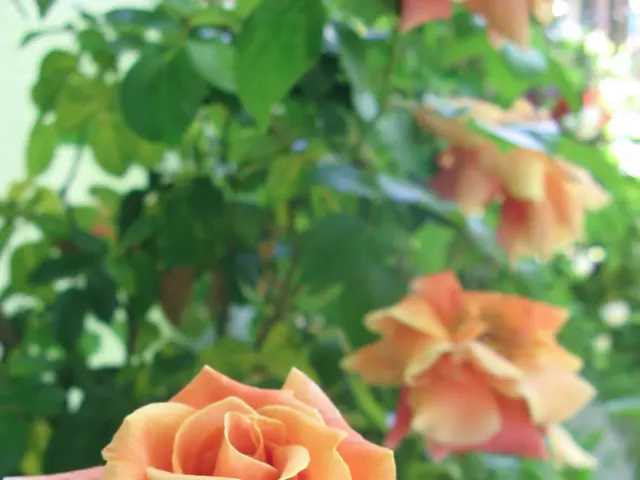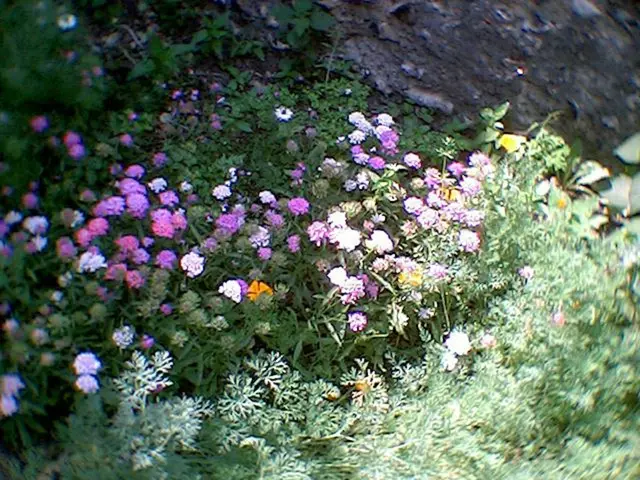5 Easy Vegetables That Flourish in Elevated Planting Boxes
Gardening enthusiasts and novices alike are flocking to raised garden beds, and even celebrity gardener Joanna Gaines can't get enough. These versatile planting structures, made of wood, composite wood, steel, or stone, cater to any garden design and can accommodate both edibles and ornamentals. If you're hankering to get your hands dirty, these experts share five veggies that are a breeze for garden newbies.
::: {data-listtype="bullet"}- Kevin Lenhart, landscape architect and design director at Yardzen- Shannon Cowan, gardener and editor at Eartheasy:::
Garden Bed Bliss: Tips and Tricks
Though climate plays a role in what can thrive in raised beds, Kevin Lenhart, design director at Yardzen, advises, "Raised beds offer control over soil composition, moisture content, and soil exposure." With suitable moisture and care, these beds can support a variety of plants, provided you select the right materials and maintain the proper soil mix. Shannon Cowan, an expert gardener at Eartheasy, concurs with making the soil mix loamy (rich in organic matter) and well-draining. She also suggests adding compost and organic fertilizer for nutrient-rich soil.
Feeding Your Garden Beds
Soil Composition Tips
- Loamy texture is ideal - heavy on the organic matter
- Drainage is crucial
- Proper moisture retention
For a stunning flower garden, six-inch-deep beds should suffice. However, for root vegetables, such as beets and carrots, plan for deeper beds of 12 to 24 inches to accommodate complex root systems. Lastly, situate your garden beds somewhere they'll receive at least six to eight hours of direct sunlight daily.
Beet Bliss
Sweet, earthy, and vibrant, beets thrive in loose, deep soil - the perfect environment for root vegetables. Requiring at least six hours of sunlight, moist, but not soggy soil, and proper spacing for growth (four inches apart), plan to harvest your beets within 50-70 days.
Best Season for Planting: Early spring or early fall, as they thrive in cooler temperatures
Carrot Craze

Another root vegetable that prospers in raised beds is carrots. They love cool, moist soil and should be given adequate vertical space for growth - a minimum of 12 to 18 inches deep. Make sure to thin out the seedlings once their leaves expand, and remember to avoid planting them near other root vegetables to prevent competition and disease transfer. Harvest your carrots when the green tops are mature, about 70 to 80 days after planting.
Best Season for Planting: Early spring two to three weeks before the last frost, or in early fall 10 to 12 weeks before the first frost
Bushbean Bonanza
Ideal for raised garden beds, bush beans, or green beans, grow easily, quickly, and abundantly. Ensure the beds are two feet deep or more and receive eight hours of direct sunlight daily. If your bush bean plants aren't producing pods, it could mean they're not getting enough sun. Avoid planting them near onions, as they can stunt their growth.
Best Season for Planting: Late spring to midsummer, when soil temperatures are between 65 and 75 degrees
Kale Koala
Kale thrives in fertile, well-drained soil with a sandy, loamy texture and plenty of direct sunlight. You'll likely find tomatoes companionable with this leafy green, but beware—they should grow in separate beds, as kale can inhibit the growth of nightshades. Harvest when the stems are approximately 12 inches long, and marvel at its prolonged harvesting capabilities.
Best Season for Planting: Early to mid-spring for a summer harvest and throughout the fall
Intrigued by the blossoming world of raised garden beds and itching to get started? Follow these best practices to create a thriving environment for your beets, carrots, bush beans, kale, and cucumbers:
- Select a well-draining soil mix.
- Achieve proper moisture retention by incorporating organic matter.
- Opt for a loamy texture that is rich in organic matter.
- Ensure your soil is slightly acidic to neutral (pH 6.0–7.0).
- Choose a planting location with at least six to eight hours of direct sunlight per day.
- Ensure proper drainage and proximity to a water source.
- Consider windbreaks or barriers for exposed sites or curious animals.
Happy gardening, and may your green thumb flourish!
- Outdoor gardening, particularly raised garden beds, is becoming increasingly popular among homeowners, even including celebrity gardener Joanna Gaines.
- If you're interested in gardening and starting with raised garden beds, consider the importance of soil composition, moisture content, and soil exposure in these structures as advised by landscape architect Kevin Lenhart.
- For successful growth of veggies like beets and carrots in raised home-and-garden beds, ensure the soil composition is loamy, well-draining, and deep enough for root systems, as recommended by Shannon Cowan from Eartheasy.









